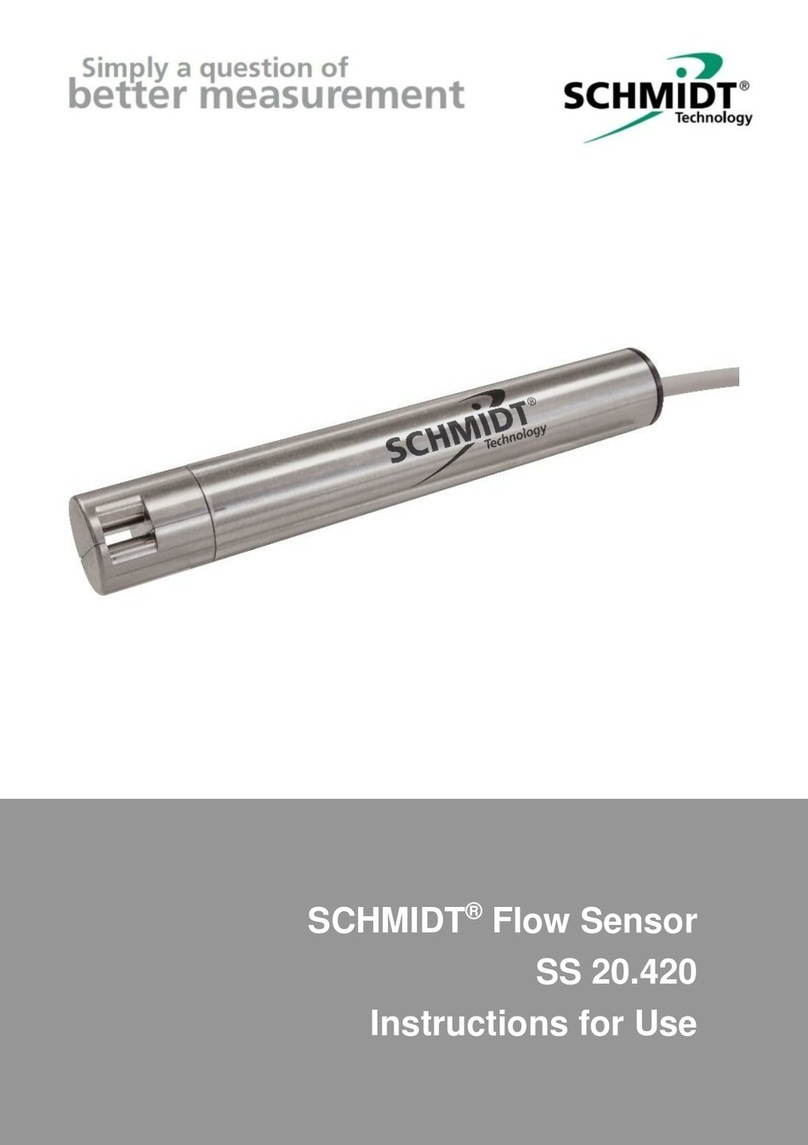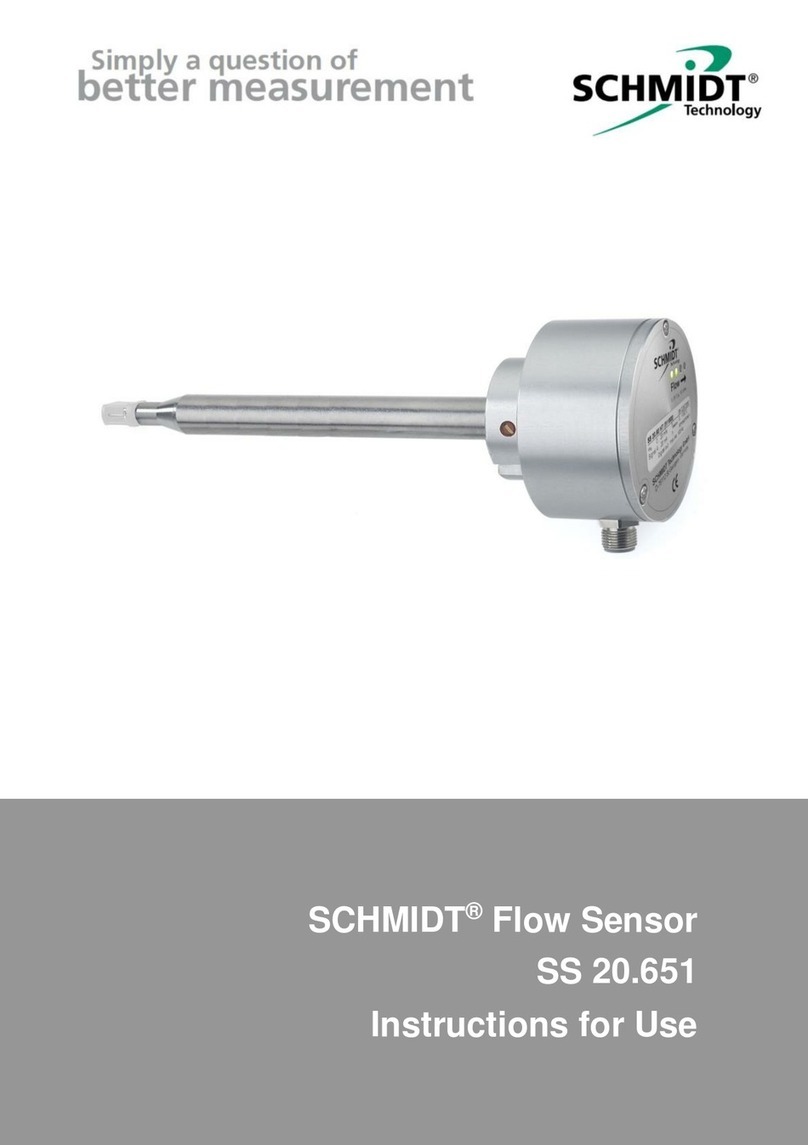Mounting sequence
If not yet in place, first drill a bore into the wall or ceiling for installing the
mounting bush. Then the mounting bush is fastened in the wall or ceiling.
Feed connecting cable from cleanroom side through the mounting bush
(open cable ends at first). The cable plug should project from the mounting
bush by about 5 cm. There must be enough room behind the mounting
bush, to allow the cable to be pushed backward when screwing in the
sensor.
Then connect sensor with connection cable (plug in cable connector and
screw on sleeve nut), insert sensor into mounting bush and tighten mount-
ing screw by hand. Now the sensor canstill be aligned accurately byhand,
if required. Finally, the holding fixture screw must be tightened with a key
wrench (wrench size 22) until the sensor is sufficiently secured against
twisting (hold sensor, if necessary).
Prior to commissioning the sensor, remove the protective cap.
Mounting beneath a ceiling
The angled sensor has been designed for mounting beneath a ceiling.
After screwing the sensor into the ceiling sleeve, its tip is automatically in
the correct position to measure a vertical downdraft flow from the filter
outlet. Only the torsional angle of the sensor arm (parallel to ceiling) has
to be aligned. Then tighten the assembly screw using the key wrench until
the sensor is secured against twisting (hold sensor, if necessary).





























